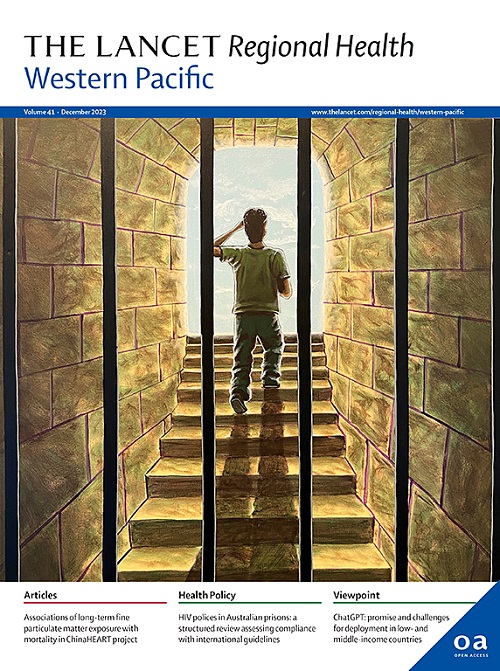Social inequalities in lung cancer screening in China: a cross-sectional study
IF 7.6
1区 医学
Q1 HEALTH CARE SCIENCES & SERVICES
引用次数: 0
Abstract
Background
Lung cancer is the leading cause of cancer-related deaths in China, while screening for lung cancers offers an opportunity for early detection and reduced mortality. Limited data exist on nationwide lung cancer screening uptake in China, particularly concerning social inequalities. This study aims to assess lung cancer screening uptake situation in China, examine sociodemographic factors associated with screening participation, and identify barriers to screening, particularly in relation to social inequalities.
Methods
Between September 2022 and January 2023, we conducted the Chinese Residents Cancer Screening Services Survey, assessing uptake and willingness to participate in screening for various cancers, including lung cancer. The survey included a nationally representative sample of 10,000 adults aged 35-69 from 100 counties and districts across 26 provinces. Lung cancer screening uptake was defined as prior participation in chest or lung CT scans for cancer screening or detection. Key variables examined include age, gender, smoking habits, and individual-level and area-level socioeconomic status.
Findings
Lifetime lung cancer screening rates were 37.21% (95% CI 35.83-38.61) for men and 39.58% (95% CI 38.26-40.92) for women, while screening within the past five years was 34.42% (95% CI 33.07-35.80) for men and 37.47% (95% CI 36.16-38.80) for women. Smokers had the lowest uptake (33.97%, 95% CI 32.12-35.86) compared to ever-smokers (46.77%, 95% CI 43.05-50.51) and never-smokers (39.25%, 95% CI 38.08-40.42). Rural residents had lower uptake (26.59%, 95%CI 25.03-28.20) compared to urban residents (43.67%, 95%CI 42.50-44.84). Education and income levels were strongly associated with screening participation, with higher rates in richer and educated individuals. Area-level social inequalities were also notable, with screening uptake ranging from 56.87% (95% CI 54.32-59.39) in the least deprived 10% counties to 26.00% (95% CI 22.21-30.08) in the most deprived 10%. Across all socioeconomic groups, the primary reason for not participating in cancer screening was the belief that their risk of cancer was too low, while socially vulnerable groups were more likely to be deterred by screening costs or fear of a cancer diagnosis.
Interpretation
Lung cancer screening uptake in China remains low, particularly among smokers. Notable social inequalities in screening participation were identified, with lower uptake among rural residents and individuals with socioeconomic disadvantages at both the individual and area levels. Targeted public health interventions are crucial to raise awareness and improve access to lung cancer screening, especially in underserved communities.
Funding
China Development Research Foundation.
求助全文
约1分钟内获得全文
求助全文
来源期刊

The Lancet Regional Health: Western Pacific
Medicine-Pediatrics, Perinatology and Child Health
CiteScore
8.80
自引率
2.80%
发文量
305
审稿时长
11 weeks
期刊介绍:
The Lancet Regional Health – Western Pacific, a gold open access journal, is an integral part of The Lancet's global initiative advocating for healthcare quality and access worldwide. It aims to advance clinical practice and health policy in the Western Pacific region, contributing to enhanced health outcomes. The journal publishes high-quality original research shedding light on clinical practice and health policy in the region. It also includes reviews, commentaries, and opinion pieces covering diverse regional health topics, such as infectious diseases, non-communicable diseases, child and adolescent health, maternal and reproductive health, aging health, mental health, the health workforce and systems, and health policy.
 求助内容:
求助内容: 应助结果提醒方式:
应助结果提醒方式:


